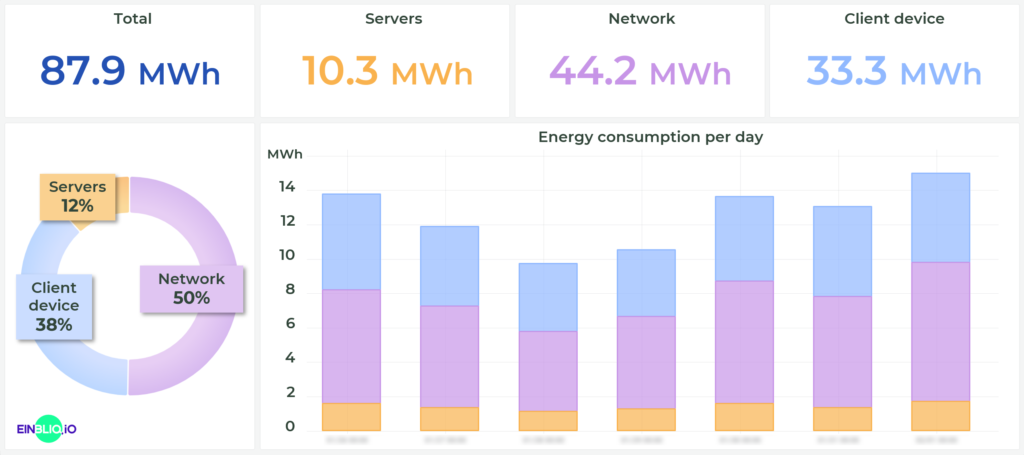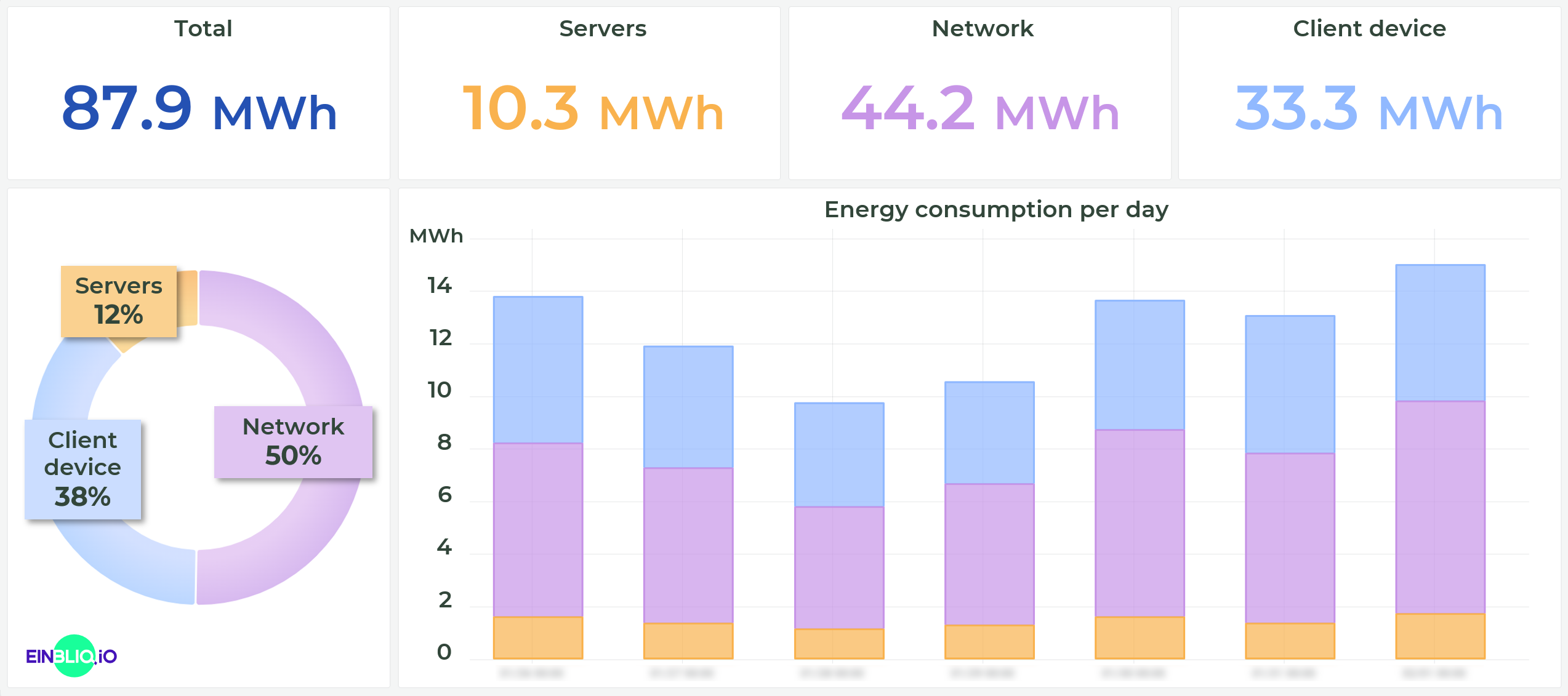Carbon footprint awareness now extends to all aspects of our lives, media included. Early studies on the impact of streaming delivered hugely different outcomes, often orders of magnitude apart. Recent research is more consistent.
This article was originally published in EBU tech-i 055.
It is misleading to look only at CO2 figures when assessing the impact of streaming. Green energy is scarce and disputed measures such as carbon offsetting disguise the amount of energy actually used. Many ‘net-zero’ ventures use and potentially waste massive amounts of energy. We need to focus on energy figures. Soaring energy prices support this. While estimating overall energy use is important, a recent pilot by Deutsche Welle (DW) and EINBLIQ.IO goes further, aiming to measure the individual consumption of each individual streaming session. The first stage covers DW’s mobile apps and website. A tracking library is included in the media player collecting real-time playback data for each session. This includes details such as playback duration, quality, network, CDN and client details, thus capturing every single element of the chain.
Energy model
As of today, there is no detailed measurement of actual energy information available along the chain. Thus, a model maps collected playback data into energy information. Our model is based on research by BBC R&D, Carbon Trust and DIMPACT. Detailed real-time data is collected in the clients and used with the model to estimate the energy used for each session and for each of the delivery chain’s elements. The aggregated data can be filtered and illustrated. However, this model-based approach lacks details like live energy data from the infrastructure. This will become more relevant when taking decisions and validating them. Only with more detailed data, we will be able to identify and optimize all elements. Individual components should not be considered in isolation: to understand if it is worth spending more energy on content encoding, we need to know the energy impact on
- the client devices and
- server storage and network.
Optimization will vary across the service and content catalogue, e.g., on-demand vs. live, long-tail vs. popular content. Distribution infrastructures such as CDN nodes need to be ready for sudden increases in demand. Peak scenarios cause the biggest headaches, while outside of peak times the infrastructure is wasting energy, mostly just idling. This leads to the effect that, when estimating energy use, sessions during peak times appear more efficient than those during average hours. This is misleading at best: dimensioning infrastructure for peaks causes streaming to be more energy-intensive at all times. Intelligent models must attribute this fairly. Recent technology approaches like ad-hoc edge caches could cap the peak and become a game changer (currently tested by SWISS TXT, rbb and EINBLIQ.IO in 5G-MediaHUB).

What about broadcast?
Broadcast is most efficient during peaks, as there is no marginal energy use. However, the presumed shift from broadcast to streaming raises questions: what is the impact in terms of energy? Where is the energy break-even between streaming and broadcast? Will broadcasters switch (dynamically) in future? Additional data and technologies like HbbTV internet link services, DVB-I, native IP broadcasting and multicast ABR can help pave the way. All these scenarios confirm that we require reliable, ideally real-time, energy-use data for all elements of the distribution chain – from infrastructure providers, yet also from thirdparty media platforms. As an industry, we need to work together – and for public service media it is an excellent opportunity to be a first mover.
By closing the transparency gap in video streaming, EINBLIQ.IO helps OTT providers reduce energy consumption and greenhouse gas emissions.

